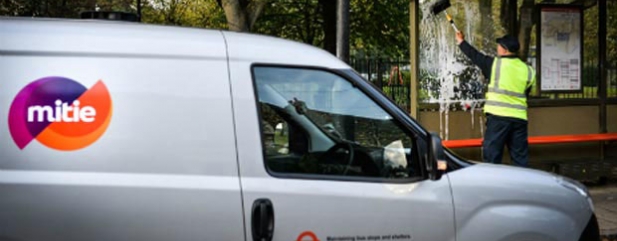Archived article
Please note that tax, investment, pension and ISA rules can change and the information and any views contained in this article may now be inaccurate.
Can you make money from investing in outsourcing companies?

Outsourcing companies have been thrust into the spotlight by the demise of Carillion (CLLN). The high profile corporate failure raises the question of whether this type of business can ever be a good investment.
On the face of it, winning large, long-term contracts from a government should be great for revenue visibility.
However, these companies operate on thin margins as strong competition has helped drive down prices and with governments often assigning work to the lowest bidder.
WEAK PROFITABILITY
This weak profitability means returns have been heavily impacted by unplanned changes to contracts, operational issues and rising labour costs and the sector has been beset by profit warnings.
As the accompanying table shows, the sector has – on a broad basis – been a patchy investment on a short, mid and long-term basis. Yes, there have been the odd exception, but overall the sector has sorely disappointed.
The collapse of Carillion and the unexpectedly strong showing for a Labour Party which is more negative on the involvement of private firms in public projects in the June 2017 General Election has arguably increased the risk profile of the space even further.
In light of Carillion’s collapse, we now look at three of the biggest outsourcing companies on the UK stock market to give you an idea of what they do, how much money they make and their financial strength.
SERCO SHARES HEAD SOUTH
Serco (SRP) is a provider of public services with limited direct exposure to Carillion’s contracts. Of its £3bn turnover, around £750m comes from central government contracts such as running immigration detention centres and managing the Atomic Weapons Establishment.
The company has endured a difficult 12 months and its share price has fallen c35% to 95p in that period.
Serco purchased some of Carillion’s healthcare assets last year which could potentially add £1bn to the company’s order book.
Analysts at broker Liberum said at the time of the acquisition that given Serco’s existing healthcare business brings in between £200m and £250m of revenue a year, the Carillion contracts could make Serco the largest healthcare facilities management provider in the UK.
Serco may be able to acquire the rest of the stricken company’s healthcare assets which are valued at £150m in total but given Carillion is in liquidation this is by no means a given.
Serco’s margins typically stand between 2% to 3%. Its ambition to lift them to between 5% and 6% may be achieved by the expiration of onerous provisions on existing contracts although analysts at broker Peel Hunt are sceptical.
Peel Hunt forecasts margins of 2.7% for 2018 and between 3% and 3.5% for 2019. It says that ‘while organic growth will be the priority, acquisitions may offer a lower-risk approach to growing and scaling revenues’.
The company arguably has limited scope for further acquisitions until its free cash flow generation improves.
Serco trades on 32.4 times the 3p earnings per share forecast by Peel Hunt for 2018. It does not currently pay a dividend.
NOT SO MIGHTY MITIE
Like Serco, Mitie (MTO) has government contracts including the running of immigration detention centres and managing juvenile centres. It has no direct exposure to Carillion but may be looking to pick up some of the contracts the company previously held.
The company’s recent failure to sell its property division was a ‘slight disappointment’ to broker Liberum but also ‘no great surprise’. It adds ‘The property services market is challenging and does not fit with the rest of group’.
Mitie has slightly better margins than Serco, achieving 3.8% for 2017. Like others in the sector, the company has been subject to much scrutiny by the market. Several investigations have been made into its accounts by financial regulators.
Mitie trades on 13.5 times 2018’s 14.3p of forecast earnings and has a 2.1% prospective dividend yield using Peel Hunt’s forecasts.
Management is keen to reduce the amount of debt in the company and has targeted £40m of cost savings between 2018 and 2020. Liberum forecasts £138m net debt position at the end of 2018.
CAPITA CHECK UP
Capita (CPI) has the largest percentage of government contracts to overall revenue of the companies mentioned, half of its £4.9bn revenue.
Like Mitie there has been a drastic reduction in its market value. Its share price has nearly halved since last summer after its turnaround efforts weren’t going quite as expected.
The company employs a vast 70,000 workers in the UK and is involved in work ranging from administering the teachers’ pension scheme to providing technical services to the NHS.
Its margins are better than others in the sector, reaching around 11% for 2017. This reflects a different business mix with a greater focus on providing higher return IT services.
The balance sheet is not too stretched following the recent disposal of Capita Asset Services at a net debt to earnings ratio of around two times.
Capita trades on 8.2 times 2018’s 44.6p of earnings while yielding 8.6% using Peel Hunt’s forecasts. The lofty yield implies the market thinks the dividend will be cut. (DS)
Important information:
These articles are provided by Shares magazine which is published by AJ Bell Media, a part of AJ Bell. Shares is not written by AJ Bell.
Shares is provided for your general information and use and is not a personal recommendation to invest. It is not intended to be relied upon by you in making or not making any investment decisions. The investments referred to in these articles will not be suitable for all investors. If in doubt please seek appropriate independent financial advice.
Investors acting on the information in these articles do so at their own risk and AJ Bell Media and its staff do not accept liability for losses suffered by investors as a result of their investment decisions.
Issue contents
Big News
- EMIS stung by after-care foul-up
- Draper backing for cryptocurrency start-up
- Market shock after Dignity unveils radical new pricing structure
- Top performing funds are harder to find
- US treasury yields hit highest level since 2014
- Bookies bashed on £2 betting stake cap reports
- Connect crashes on profit warning

 magazine
magazine









